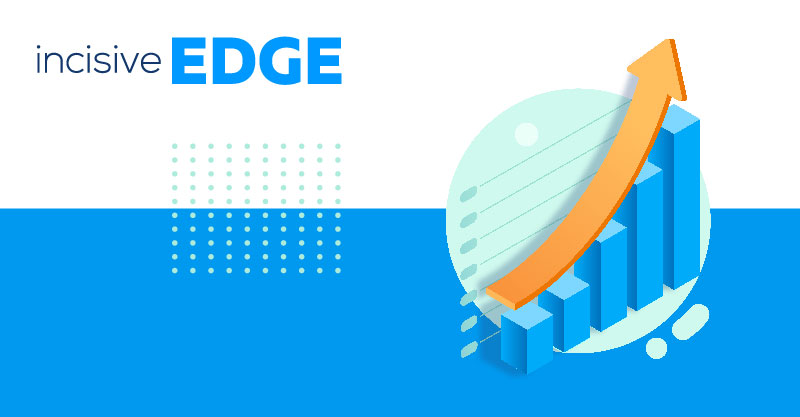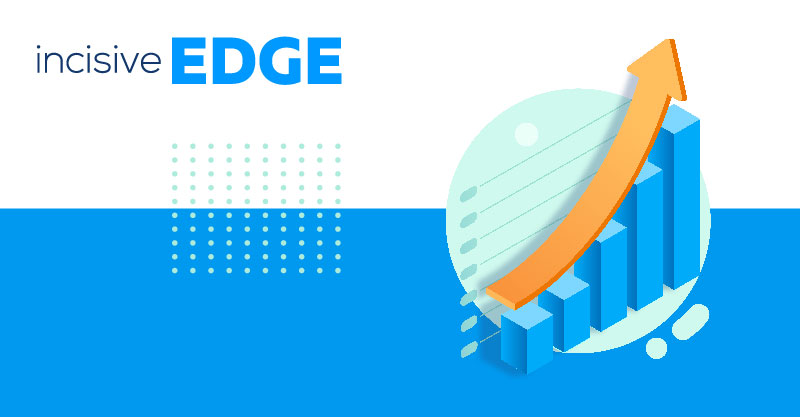This year, the World Retail Banking Report found that nearly two-thirds of banking customers now use products or services offered by FinTech Companies, and that this number is only set to grow.
“While the FinTech phenomenon is being driven by young and tech savvy customers, the appeal for FinTech firms is expected to intensify across all age groups. This can have a profound impact on the way banks carry out their business in future.”
Despite this, FinTech business digital marketing is really only just beginning to hit its stride. With the average revenue generated consistently increasing YoY, the future looks promising.
This isn't to say that there aren't plenty of FinTech businesses with standout marketing techniques, but it can be difficult to know where to start for a FinTech company in scale-up.
Once you've developed your product and know you've got something on your hands that is going to add serious value to your ideal customers' lives, you've got to come up with a way to get it in front of them.
So you follow the inbound methodology.
You create a blog and start filling it with relevant content. The goal is to increase your web traffic.
You set up your social media channels and start firing out witty tweets and sharing insightful observations about your industry in hopes of attracting new customers and a new audience.
You add CTA's that take potential customers through to landing pages so you can start grabbing those all-important leads.
But how do you know if all this time and energy you're pouring into your marketing strategy is having a genuine impact on your ROI?
The answer is in your FinTech marketing metrics. Your marketing teams must look into the data.
If an athlete never timed his sprints or counted his reps, how would he know if his workouts are making him faster and stronger? The same thing applies to your marketing. Looking into the data allows you to see behavioral patterns among users and assess what is working and what is not.
You have to measure everything you're doing or you'll never be able to identify what it is that could really make the difference between sluggish and rapid growth of your business.
We've pinpointed five vital FinTech metrics for marketing that you need to keep an eye on and we're going to tell you exactly how to improve each one of them. These metrics will work for early-stage startups and established fintech organisations equally.
Of course, before you can start effectively monitoring your technical metrics, you need a to pick a platform that gathers them all in one place and is able to display them in an easy-to-read way. We personally find HubSpot to be an essential piece of kit for any marketer but of course, there are other platforms available.
1. Blog Post Views
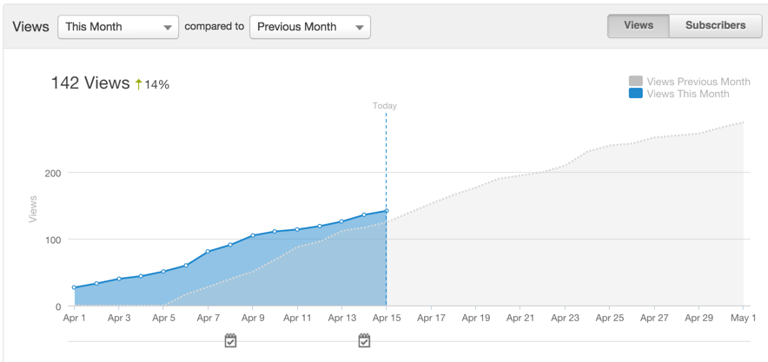
Posting content to your blog without knowing how many people are reading it is a total waste of your precious resources.
You're putting a ton of effort into researching and producing informed and well-written articles. All of which is time consuming. You need to know what resonates with your customers so that you can post content that they'll want to seek out.
Using your analytics' software, order your blog posts by number of views. Now, you can see at a glance which posts you readers are interested in and which do not engage.
If a post on a certain topic performs exceptionally well, think of it as a potential jumping-off point for a full campaign.
It might be that your readers are especially interested in accounting software, for example.
So you could start by writing a post or two with an overview of what to look for in accounting software, then more the week after on how businesses have used it, and more still on the software you would recommend.
Before you know it, your blog has become the go-to destination for information on accounting software and you've established yourself as a savvy, trustworthy thought leader.
2. Social Media Impact
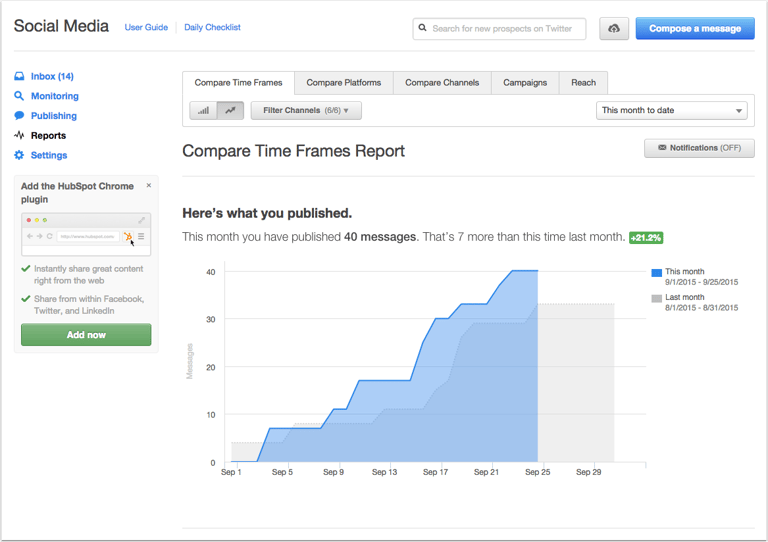
There are an intimidatingly high number of massive social networks that you can use to draw in traffic for your business.
Each of them has a different user base and each has certain content types that perform better on that platform than elsewhere.
It’s entirely possible that you can seemingly do everything right on a certain social media channel and still receive zero traction, because it’s simply not the right fit for your business.
An inherently visual channel like Instagram, even though it may be the platform for your ideal customers and have the highest levels of brand engagement, may be difficult to work with if your product is intangible.
Developing a popular bitcoin wallet is great, but it’s tough to take a cute photo of. Let’s face it, it’s never going to be a skateboarding cat…
After you’ve done your research and decided on which channels would be the best ones to pursue, start posting content regularly and keep a close eye on what gets the most engagement.
HubSpot will even let you monitor several channels all in one place and allow you to break it down by campaign so you can get a really clear holistic view of how your social content is performing.
Generally, posts with images and a hashtag or two will perform best. Even better is if you can link your commentary (in a natural way) to a currently trending topic.
Monitor what does well, then focus on doing more of what is working.
Using your monitoring software, you can check graphs and watch your reach, follower number and clicks steadily climb.
See what does well for you, and do more of it! It’s as simple as that.
Using your monitoring software, you can check graphs and watch your reach, follower number and clicks steadily climb.
3. Call-To-Action Click-Through Rate
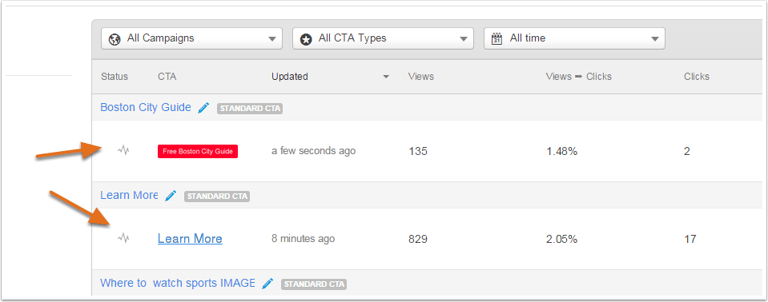
It’s all well and good that you’ve got great blog posts and plenty of social media followers to promote your content, but what you really need is for people to move through your funnel by clicking your CTAs.
Having a solid CTA click-through rate is your proof that you’re providing valuable content and that people are interested in the services and products you’re offering.
If your percentage seems low, it might be worth carrying out some A/B testing until you hit on the sweet spot.
It could be something as simple as the location and colour of your buttons. You should try to use a contrasting colour and experiment with placing your CTAs in sidebars, at the end of posts and in the middle of copy. You should be always trying to build on the last best performing CTA.
Once you’ve ironed out the kinks, you should see your CTA click-through rate steadily rise.
Once you’ve ironed out the kinks, you should see your CTA click-through rate steadily rise.
4. Landing page conversion rates
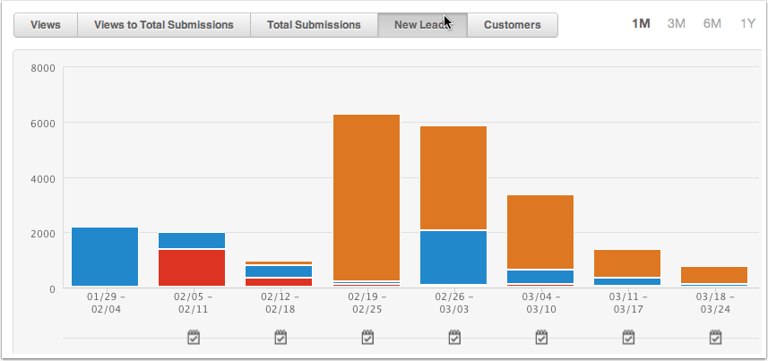
Converting strangers into leads is perhaps the single most important KPI of your FinTech marketing strategy.
A stranger is very rarely (if ever) going to jump straight from reading a single piece of content to becoming a loyal customer that you can delight for years to come (if only, right?).
They have to go through the steps of the inbound methodology, and you have to gain their trust.
Really understand the key performance indicators of your individual landing pages so you can analyse which ones are working best for you and why.
There will always be one or two that are doing better than others, sometimes by a significant margin. However, the main question will be what are the key metrics that one standout landing page that makes it so effective?
Does it offer an especially attractive and valuable piece of content?
What kind of information does it request from the potential lead?
You need to do your research and get to the heart of why it’s doing well, then use that information and apply it to all of your future landing pages.
5. Traffic sources
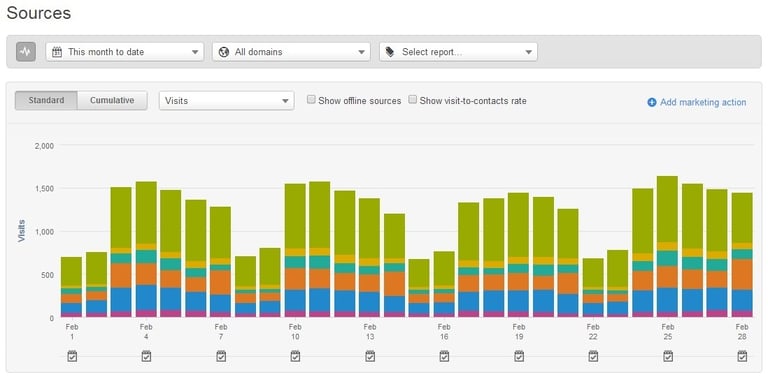
It is absolutely essential that you monitor your web traffic sources. This one FinTech marketing channel metric will help to guide all of your marketing efforts and campaigns.
The aim is to create a lean marketing strategy that works as hard as possible for you and your business, right through to the result which is hopefully customer satisfaction.
The only way to do this is by pinpointing which streams bring in the most traffic and potential leads and focusing your energy on them as key drivers.
It might be a channel that you hadn't necessarily considered to be important for your marketing plan. You might be putting all your staff to work on your blog and big social media accounts, when, it's the few posts you've done on niche, dedicated forums that have been having the most impact.
You should also keep a close eye on which keywords people are searching for when they come across your business organically. You can use these words to guide you when it comes to developing content ideas and themes to enhance engagement, customer retention rate and customer lifetime value.
Your business and your product are unique, and your approach to marketing should be too.
